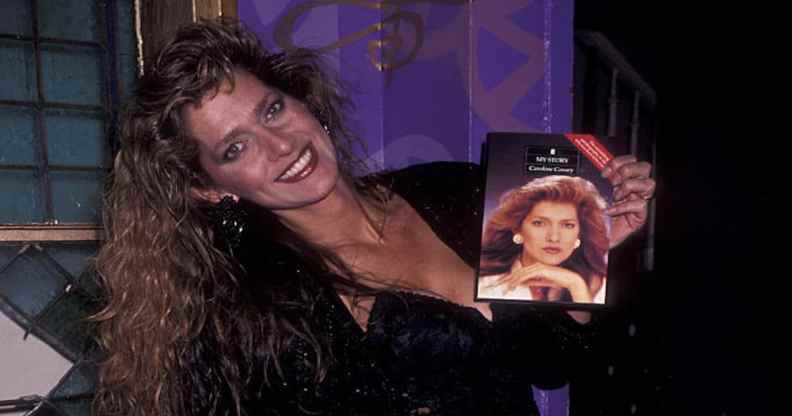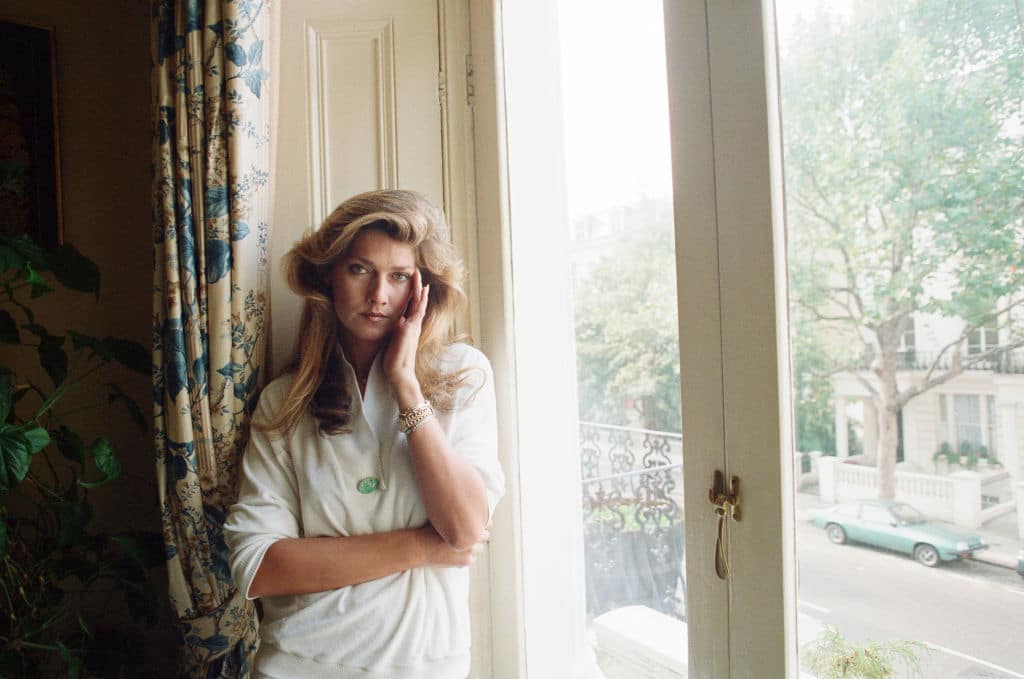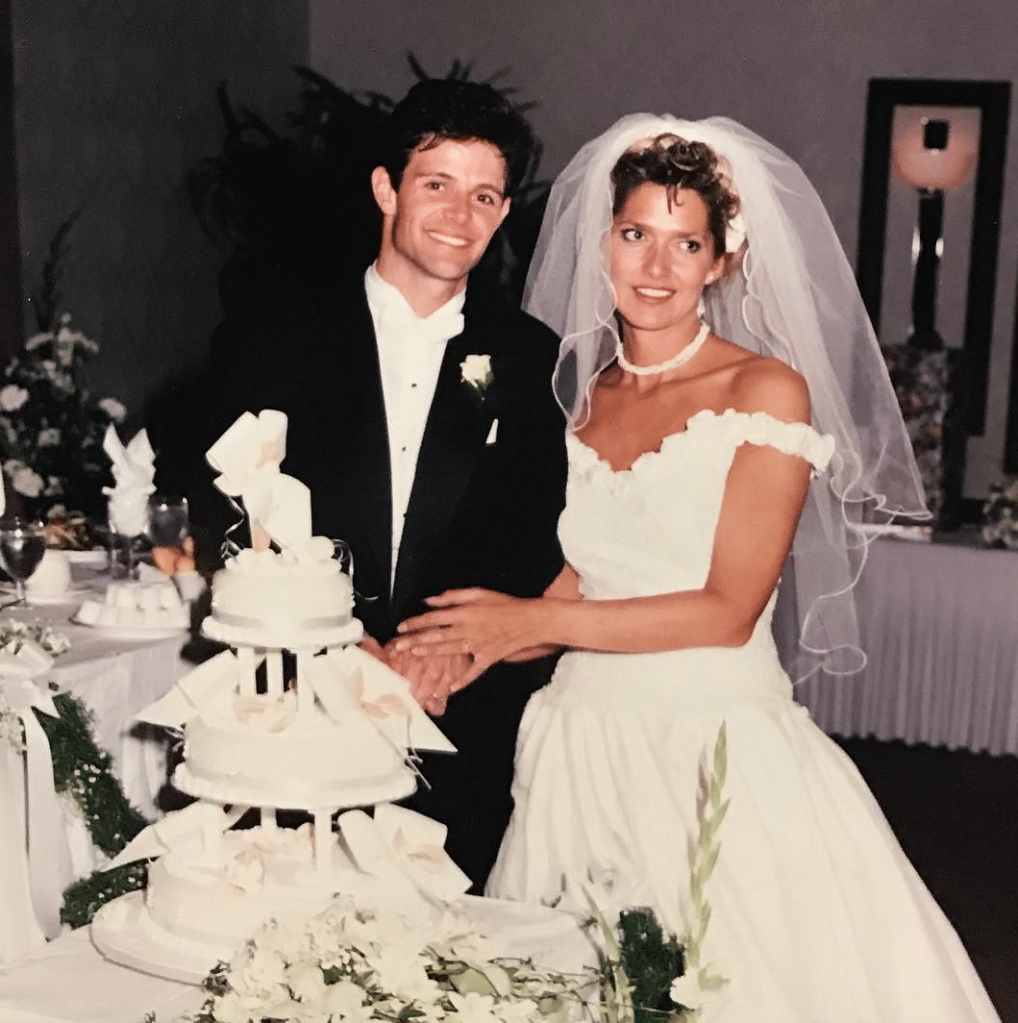Meet the trailblazing transgender Bond girl and Playboy model who fought tirelessly for equal rights

Caroline Cossey attends her book launch in 1992 in New York. (Ron Galella /Getty Images)
When LGBTQ+ pioneers are discussed, a number of famous faces probably spring to mind. To mark Trans+ History Week, we wanted to share a story you might not be quite as familiar with.
Caroline Cossey – also known as Tula – was a Bond girl, dancer and top model who took the British government to the European Court of Human Rights in the ’90s in a bid to change discriminatory UK laws.
Defunct tabloid the News of the World outed her as trans in 1981 after she featured in the Bond film For Your Eyes Only.
Up until that point, the career that had led to her Bond appearance had been a successful and lucrative one. When she was 17 she left home and became an usher at a West End theatre, where a choreographer spotted her and asked if she wanted to become a showgirl.
When she told him she was hadn’t yet had gender-affirming surgery, he was unfazed and told her he should go for it anyway. She plucked up the courage to go to the audition and was soon working in Paris, then Rome. She used the money she made as a dancer to fund her surgery, before going on to forge a career as an international supermodel.
In 1978, after securing a part on the TV game show 3-2-1, a tabloid journalist contacted her to tell her he had discovered she was trans and was planning to write about it. She dropped out of the show. In 1981, she was cast as an extra in For Your Eyes Only, and shortly after that the News of the World publicly outed her, splashing the headline “James Bond’s Girl Was A Boy”.

In her first autobiography I Am a Woman, written to take back control of her own narrative, she wrote:
“There, I thought, went all my hopes of leading a normal life. I was hounded by journalists everywhere I went, and their lack of understanding – the kinds of ignorant questions they asked – made me determined to tell my side of the story.”
In a later interview with Cosmopolitan, she said that she’d attempted suicide after the traumatic incident.
“I woke up in my bathroom in vomit. I just felt ashamed and embarrassed. And then at a certain point, I just got sick of being ashamed of something I’d never had any control over, which was my assigned gender.”
Shortly after that, she met an Italian man named Count Glauco Lasinio at a skiwear shoot in Italy. He proposed and urged her to campaign for changes to the UK’s anti-trans laws, including the fact that she wasn’t legally allowed to marry a man. She began the seven year process that would take her petition against the British government’s refusal to treat her as a woman to the European Court of Human Rights. The lengthy case would outlast her relationship with the Italian count.
When he died in 2019, she paid tribute to him on Twitter, saying: “Deeply saddened to lose a wonderful and supportive friend. Count Glauco Lasinio was one of only a handful of men that stood up for me publicly and made me fight for my rights. He restored my dignity after the onslaught of being outed by the press and made me a proud lady again.”
A couple of years later, the tabloids reported on her subsequent marriage to millionaire businessman Elias Fattal – who she described as the “love of her life” – with the headline “Sex Change Page Three Girl Weds”, leading him to break up with her immediately after they returned from their honeymoon, as his parents had been unaware she was trans.
She also received death threats and the brakes on her car were sabotaged. She turned to writing again in order to cope, publishing her second book, My Story, in 1990, and returned to modelling, posing for Playboy, saying that she “wanted to make a statement”.
She told Joan Rivers about the impact of the tabloid’s behaviour saying:
“We decided not to tell (his parents that I was transgender). We went for our honeymoon to Acapulco and we thought we’d tell them two years down the line. We came back and it was front page in one of the tabloids. He was summoned home by his mother, two days later I got a phone call from his brother saying you need a lawyer.

“I never saw my husband again and didn’t have a leg to stand on in terms of a settlement. The marriage was annulled. Being exposed by the press, being dumped by my husband, those are the issues I’m trying to address. My birth certificate can’t be amended, which means I’m legally a male and I can’t get married. I break the law every day because I use women’s bathrooms.”
She explained that wasn’t the case in the US and Canada at the time, and that if she lived in America she would have more rights than she did in the UK, including the right to marry. Joan described the prejudice as “horrendous”.
In an interview with Playboy about the breakup, she said: “In the end, I guess he just couldn’t stand up to his family. The sad thing is, I think he still does love me. You can’t just stop loving somebody in five minutes.”
Asked where she saw herself in 10 years time, she replied: “I’d like to have what I had when I was with my husband – totally happy, to have peace of mind and also to know the 30,000+ people I’m fighting for in England – to know how that’s turned out… they get sacked and have a bad time because people don’t understand what we’re all about.”

In 1992, Caroline Cossey married a Canadian man named David Finch, they’re still married and live near Atlanta, Georgia. The Canadian press reported their wedding oh-so-sensitively as “A ’90s odd couple: Montreal man to marry transsexual.”
It took more than 10 years, but finally, in 2005, the Gender Recognition Act did come into force, allowing people to change their legal gender.
In a recent interview, she told Cosmopolitan: “Times have changed so much that it’s amazing. I knew over the years when I’d see shows with gay characters that one day there would be more visibility for trans people.”
You can follow Caroline on Instagram, YouTube and Twitter.
How did this story make you feel?

